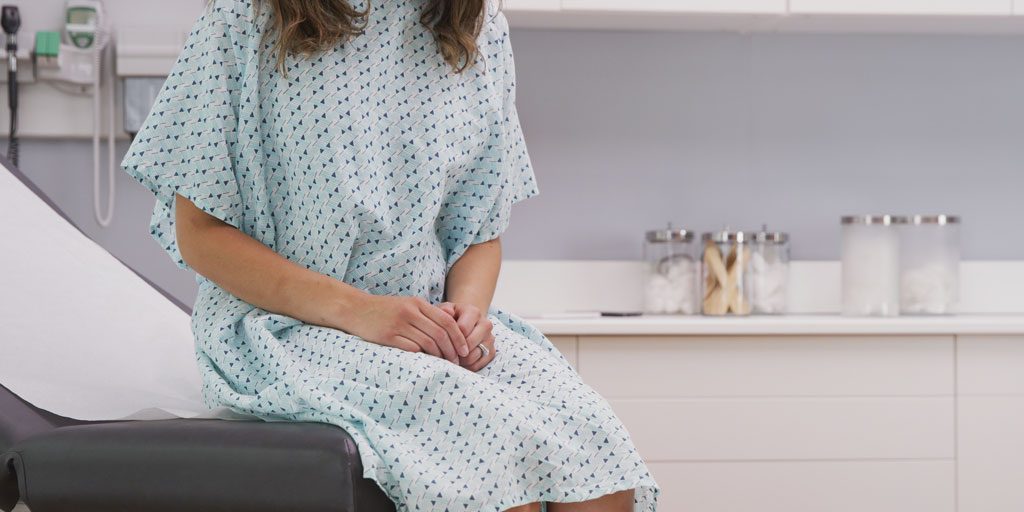Lichen Sclerosus or STD? Knowing the Symptoms
Posted By:
Dr. Michael Coyle, DO FACOOG, FPMRS

When you’re a sexually active woman, any pain, itching or rashes in the vaginal area and trigger panic: Is it an STD? Sexually transmitted diseases (STDs) are spread through sexual contact. Even if you are in a monogamous relationship, it is possible to contract an STD from an unfaithful partner, from a partner who has a long-latent issue they didn’t know about or to have your own symptoms appear months after a possible exposure. But in some cases, the symptoms of other conditions can be mistaken for an STD.
Lichen sclerosus is a relatively uncommon skin issue that causes itching, patchy skin and pain in the vulvar and anal areas and can cause painful urination and lead to secondary infections. Or, in mild cases, the symptoms may not be noticeable.
Unlike a sexually transmitted disease (STD), lichen sclerosus is not contagious and is not spread through sexual contact.
Symptoms Of Lichen Sclerosus
Researchers don’t know the cause or trigger of lichen sclerosus but believe it may have a genetic component or be an immunological disorder. Women who have had other immunological skin issues or who have had injuries to the vulvar skin and tissue are at higher risk for lichen sclerosus.
Vulvar lichen sclerosus symptoms can range from very mild to quite severe.
- Patches of white, crinkly skin
- Severe itching
- Skin that easily tears or bleeds
- Painful skin fusions and scarring
- Painful intercourse
- Painful urination or defecation
STDs have symptoms in common with each other and with lichen sclerosus, such as painful intercourse, but also have signs that set them apart from one another. Here are some of the most common STDs and their typical symptoms.
Symptoms of Chlamydia
Chlamydia is a vaginal bacterial infection that may not show any symptoms up to three weeks after you have been exposed through sexual intercourse. The symptoms can be mild and may be misinterpreted as yeast infections, urinary tract infections (UTI) or part of the discomfort of a woman’s menstrual cycle.
Signs and symptoms of chlamydia can include:
- Painful urination
- Lower abdominal pain
- Vaginal discharge
- Painful intercourse
- Bleeding between periods
Because the symptoms can be attributed to several different causes, it’s important to mention to your urogynecologist if there is a chance you have been infected with chlamydia or another STD.
Gonorrhea Symptoms
Gonorrhea is another vaginal bacterial infection, but the disease can also affect the mouth, throat and eyes as well as the anus. While symptoms typically appear within a week to 10 days after infection, in rare cases it can take several months for symptoms to appear, putting sexual partners at risk for infection.
Symptoms of gonorrhea may include:
- Thick, cloudy or bloody vaginal discharge
- Painful or burning urination
- Irregular bleeding or atypically heavy periods
- Anal itching
- Painful defecation
Know your options and live the life you want.
Schedule an Appointment Today
Trichomoniasis Symptoms
Unlike chlamydia and gonorrhea, trichomoniasis is caused by a single-celled parasite, Trichomonas vaginalis. Symptoms can occur anytime between five and 28 days after infection. Some women never experience symptoms.
Women infected with trichomoniasis can experience:
- Painful urination
- Clear, white, green or yellow vaginal discharge
- Atypical vaginal odor
- Vaginal itching and irritation
- Painful intercourse
- Painful urination
Genital Herpes Symptoms
Genital herpes is an incurable illness caused by a herpes simplex virus (HSV). It’s highly contagious and easily spread through sexual contact and activity. When present, genital herpes signs and symptoms may include:
- Small red bumps, blisters on the genitals
- Painful or itchy open sores in the genital and anal areas
- Pain or itching on the genitals, buttocks or inner thighs
- Flu-like symptoms during an initial outbreak
- Swollen lymph nodes in the groin
The first outbreak is usually the most severe and can include flu-like symptoms in addition to blistering and sores. Outbreaks may occur periodically, rarely, or in some cases only once. However, herpes can be active and contagious even when visible lesions aren’t present.
Human Papillomavirus (HPV) Infection and Genital Warts Symptoms
HPV is an umbrella term for several forms of the virus. Some types cause genital warts; others dramatically increase the risk of developing cervical cancer.
Genital warts can grow on the vulva, the vaginal canal, the perineal area, the cervix and in the mouth and throat. A woman may not know she has HPV until warts appear or she has an irregular Pap test.
When symptoms of HPV do appear, they can include:
- Small, flesh-colored or gray bumps on the genitals
- Clusters of bumps that cause swelling
- Itching or discomfort in your genital area
- Bleeding with intercourse
Syphilis Symptoms
Syphilis is a bacterial infection that affects your genitals, skin and mucous membranes.
The first sign of syphilis, which may occur from 10 days to three months after exposure, may be a small, painless sore at the site of infection was transmitted, usually on the genitals, rectum, tongue, or lips. Some people experience may be multiple sores. While the sores may heal, without treatment, the disease progresses through a series of stages. In later stages, it can affect major organs, including the brain and the heart.
If you are experiencing symptoms of lichen sclerosus or an STD, schedule your appointment with Coyle Institute. It’s critical to seek treatment as soon as possible to prevent any condition from worsening, jeopardizing your health and your fertility.

